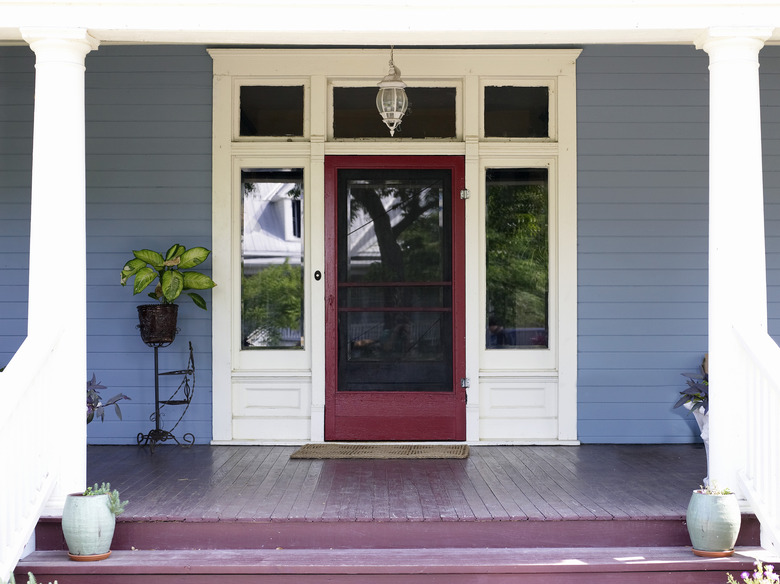How To Fix A Hydraulic Screen Door Closer
A properly tuned screen door closer pulls a door closed gently but firmly in about eight seconds. To do this, it has to contain a spring, but the action of the spring must be modulated to prevent the door from slamming. To accomplish this, door closers are filled with hydraulic fluid in a pair of sealed chambers separated by adjustable valves. The valves control how quickly the fluid passes between the chambers, and that in turn controls how fast the door closes, how quickly it latches and how far it will open. In addition to these hydraulic adjustments, door closers usually have a spring tension adjustment as well.
Make Sure the Door Closer and Hinges Are Tight
Make Sure the Door Closer and Hinges Are Tight
Before making adjustments to your door closer, it's important to make sure it's firmly attached to the door and the jamb. Problems, such as shaking and stuttering, are often caused by loose screws. While you're inspecting the door closer fasteners, take a look at the hinge screws on the door as well. If they are loose, the door is probably leaning and may not be closing all the way. After tightening loose screws, check the operation of the door closer again. You may not actually have to make any adjustments.
Screen Door Closer Adjustment Screws
Screen Door Closer Adjustment Screws
A typical door closer has a cylindrical or rectangular body filled with hydraulic fluid. The spring tension adjustment screw is on the end opposite the piston. You may see the hydraulic adjustment screws on the underside of the closer body. If not, it means you have to remove a cover first, which may or may not require removal of some fasteners. Some door closer covers just snap on and off. Once the adjustment screws are visible, you'll see three of them:
- Swing speed adjustment
- Latch speed adjustment
- Back check screw; this controls how far the door opens — it's there to protect the wall behind the door
How to Adjust a Screen Door Closer
How to Adjust a Screen Door Closer
The screws may have slot, Phillips, or hex heads, so check to determine which tool you need to turn them. The adjustment tool may have come with the door closer, but if you're like many homeowners, you probably lost it long ago.
- Turning an adjustment screw clockwise tightens spring tension and back check tension, which makes it harder to open the door.
- Turning the swing speed and latch speed screws clockwise reduces the size of the valve openings in the closer and makes the door close more slowly.
It's best to start by adjusting the spring tension to make sure the door closes all the way. After you do that, check the door operation to decide which other adjustments you need to make. If the door is closing too quickly, tighten the swing speed screw. If the door isn't latching firmly, turn the latch speed screw counterclockwise to loosen the tension.
There is inevitably some trial and error involved. Turn screws incrementally — 1/8 rotation at a time — and check the door operation after every adjustment. This is easier and more accurate than making too large and adjustment and backing off the screw to compensate.
Door Closer Leaking Hydraulic Fluid
Door Closer Leaking Hydraulic Fluid
If you notice hydraulic fluid leaking from any part of the door closer, it's time to replace it. If you have the mechanical skills, you might be able to disassemble the hydraulic chamber and replace whichever seals have worn out, but you would have a hard time refilling the chamber. As a related cautionary statement, be careful when releasing tension on any of the hydraulic adjustment screws. If the screw comes out, the cylinder will lose fluid, which will end up all over the floor. Because of the difficulty of replacing fluid, you'll probably end up having to replace the door opener.
